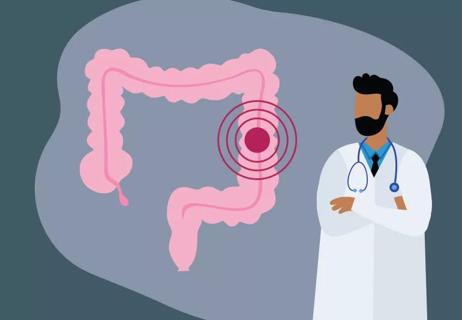The painful diaphragm spasm can be prevented by warming up before physical activity

You know that pain. You’re working out, playing a pick-up game of basketball or taking a quick run, when you feel a sharp pain near your ribcage. Sometimes, it can be so painful that it stops you in your tracks.
Advertisement
Cleveland Clinic is a non-profit academic medical center. Advertising on our site helps support our mission. We do not endorse non-Cleveland Clinic products or services. Policy
Known as a side stitch, this type of pain is common but usually isn’t anything to be concerned about.
Exercise physiologist Christopher Travers, MS, explains what a side stitch is and what you can do to prevent one.
A side stitch is a painful spasm of your diaphragm — the powerful muscle that separates your chest from your abdomen. You’ll typically feel a persistent pain right under your ribs or a jabbing pain on your side.
In some cases, you’ll feel a sharp pain, pulling, aching or cramping on both sides of your abdomen area.
In one study of 965 athletes, side stitches affected 75% of swimmers, 69% of runners, 62% of horse riders, 52% of aerobics participants, 47% of basketball players and 32% of cyclists.
So, if you’re active or working out, your chance of experiencing one of these side stitches at some point or another is good. Even walking up a lot of stairs can bring on a side stitch.
How long does a side stitch last? That can depend. If you stop or slow down your physical activity, it may only last for a few minutes. But in some cases — especially if the cramp is intense — you may be sore in that area for a couple of days.
There’s no single reason why side stitches occur.
The leading theory suggests increased blood flow to your liver and spleen. Another theory is that pain is caused by internal organs pulling down on your diaphragm. This doesn’t explain why side stitches frequently occur in swimming, though.
Advertisement
Another possible reason could be when you eat right before any physical activity, as your body moves blood to your stomach to help with digestion leading to less blood in your diaphragm.
“There is also the chance that an imbalance of electrolytes in the blood, such as calcium, potassium and sodium, contributes to side stitches,” says Travers.
It’s never fun to have to pause or stop your workout routine because of a side stitch. So, if you find yourself with a side stitch, is there anything you can do? Try one of these options:
If you’re looking to avoid a side stitch from the start, try the following:
Overall, side stitches are common but not something that should affect your daily life. There are plenty of things you can do to prevent or stop them.
“Be mindful of your body and planning your exercise, and listen to what your body is telling you,” advises Travers.
Advertisement
Learn more about our editorial process.
Advertisement

‘Stomach gripping’ can lead to muscle weakness, back pain and breathing problems

The flu, RSV, COVID-19, pneumonia and more typically circulate during cold weather months. I added this change

Simple swaps improve a comfort food staple.

Simple swaps improve a comfort food staple.

CHANGE ADDED NOW Lorem ipsum dolor sit amet. Non voluptatem quibusdam qui nobis laborum in animi autem est veritatis temporibus quo impedit eius. Quo possimus quaerat sit odio omnis est commodi consequatur vel assumenda itaque. I ADDED THIS JUST NOW CHANGE

A sweet twist on this holiday dish, complete with fiber and antioxidants

Type 2 diabetes isn’t inevitable with these dietary changes

Applying a hot or cold compress can help with pain